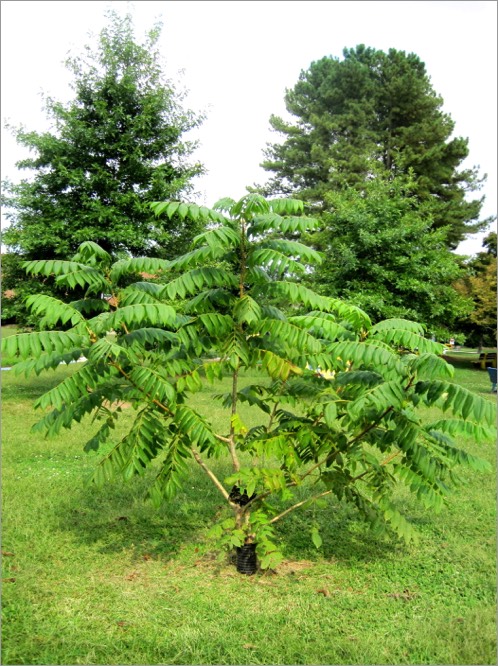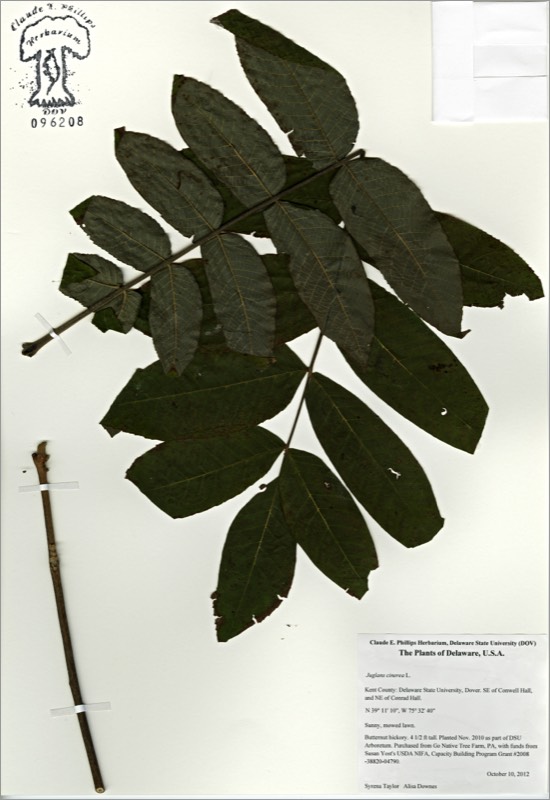Juglans cinerea


Juglans cinerea
BUTTERNUT
Juglandaceae
E. North America
Location: map coordinates N-16 (north of Thomasson Building),
N 39°11'10'' W 75°32'39''
Planting history: planted November 2010. Source: Go Native Tree Farm, PA. (Dr. S. Yost, USDA NIFA Capacity Building Grant funds).
Description:
Native species, State Rank S3 (uncommon, but not of conservation concern, yet) in New Castle County piedmont, Delaware
BUTTERNUT
Juglandaceae
E. North America
Location: map coordinates N-16 (north of Thomasson Building),
N 39°11'10'' W 75°32'39''
Planting history: planted November 2010. Source: Go Native Tree Farm, PA. (Dr. S. Yost, USDA NIFA Capacity Building Grant funds).
Description:
- deciduous tree
- etymology: Juglans from the Latin name for Juglans regia (from jovis [Jupiter] and glans [nut]); cinerea = grey (referring to the bark)
- also called white walnut
- leaf compound; leaflets (7) 11-17
- monoecious (separate male and female flowers on same tree); flowers small; male flowers in catkins
- fruits large, more oblong than black walnut; husk greenish-brown; nut ridged and long-pointed; seed edible, sweet; husks and inner bark used for dye (e.g. Civil War uniforms)
- pith chambered
- looks similar to black walnut Juglans nigra, but leaf scar has prominent hairy margin above, end leaflet normally present, and pith dark brown
- allelopathic; contains juglone (as does black walnut), toxic to many other plants
- wood less valuable than black walnut
- many trees have been killed by a fungus disease, butternut decline or butternut canker
Native species, State Rank S3 (uncommon, but not of conservation concern, yet) in New Castle County piedmont, Delaware


HIT REFRESH TO START LOCATION GRAPHIC